
 |
|
|
#1 |
|
All the news that's fit to excerpt
Name: newsie
Location: who knows?
Join Date: Jun 2008 Motorcycle(s): only digital replicas Posts: Too much.
|
[motorcycle.com] - 2016 Yamaha XSR900 First Ride Review
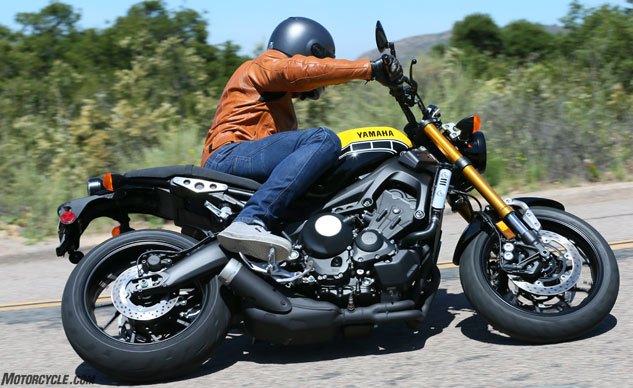 2016 Yamaha XSR900 Editor Score: 84.25%Engine 18.75/20Suspension/Handling 12.5/15 Transmission/Clutch 8.75/10Brakes 8.25/10 Instruments/Controls4.5/5 Ergonomics/Comfort 7.5/10 Appearance/Quality 7.5/10Desirability 7.5/10Value 9.0/10Overall Score84.25/100Think of the new Yamaha XSR900 as an FZ-09 that went backstage for a costume change and emerged for act II in disguise. In the process the XSR was also wired to perform some on-stage acrobatics of which the FZ is incapable. Ticket prices went up, but so did the bike’s technological accountability. We’ve been fanboys of the FZ-09 since its introduction in late 2013 as a 2014 model. The FZ had some initial teething problems such as inexcusably abrupt fueling (fixed), and too-soft suspension (not fixed), but its powerful three-cylinder engine, lightweight, and well-balanced chassis made for an exceptionally fun, do-anything motorcycle for a price that remains surprisingly affordable ($8,190). The XSR900 retains all the elements we love about the FZ-09 while addressing the suspension issue with firmer spring rates and bringing to the table a host of modern electronics including ABS, traction control, as well as an assist-and-slipper clutch. The cost of these upgrades adds a notable $1,300 from the base model FZ to the base model XSR’s MSRP ($9,490 – Matte Gray/Aluminum, $9,990 – 60th Anniversary Yellow). The increased retail price also reflects the use of aluminum bits and pieces in place of the FZ’s plastic ones. 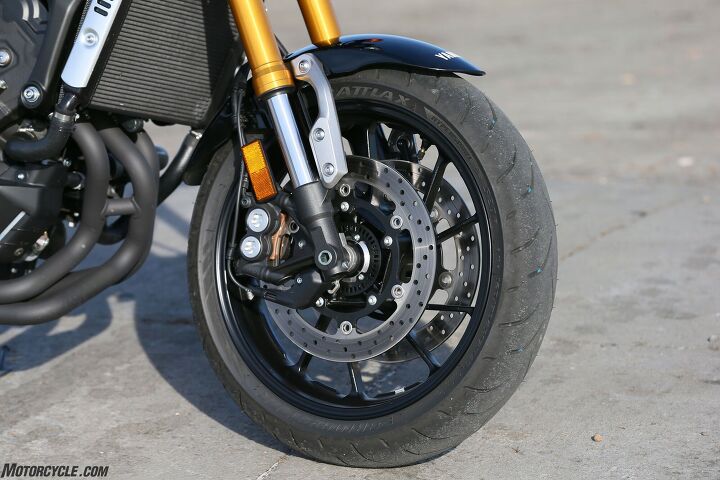 The XSR makes use of aluminum in place of plastic in areas such as the fender bracket, radiator cover, headlight bracket, brushed aluminum fuel tank covers, and rear fender. The 60th Anniversary model has gold-anodized fork legs and a yellow shock spring. Note the ABS ring and sensor. The XSR makes use of aluminum in place of plastic in areas such as the fender bracket, radiator cover, headlight bracket, brushed aluminum fuel tank covers, and rear fender. The 60th Anniversary model has gold-anodized fork legs and a yellow shock spring. Note the ABS ring and sensor.According to their respective spec sheets, the FZ and XSR are identical in terms of wheelbase (56.7 in), rake/trail (25.0°/103mm), and weight distribution (F 51.0/R 49.0). This goes a long in explaining why the two feel so similar to ride. The XSR does gain a few curb weight pounds (414 lbs vs 430 lbs) from the use of aluminum vs plastic, but the XSR remains as flickable as the FZ when flogging canyon roads. Yamaha says the XSR’s seating position weights the front end by way of canting the rider slightly further forward, but this adjustment does nothing to really change the front end’s characteristics. First-gear wheelies become routine whenever the stoplight switches from red to green, which is always fun. However, when aggressively riding the XSR through the countryside, the front end can easily become nervous when exiting a corner under power, especially if a bump in the pavement is introduced. The light front end is more exciting than scary, and it could probably be tamed with a steering damper, but feedback from the front end is vague. One solution to curing the XSR’s front end’s lack of communication might be to purchase and install the accessory clubman bars, which exchanges the XSR’s standard seating position for a cafe racer one that certainly, uncompromisingly, weights the front end. 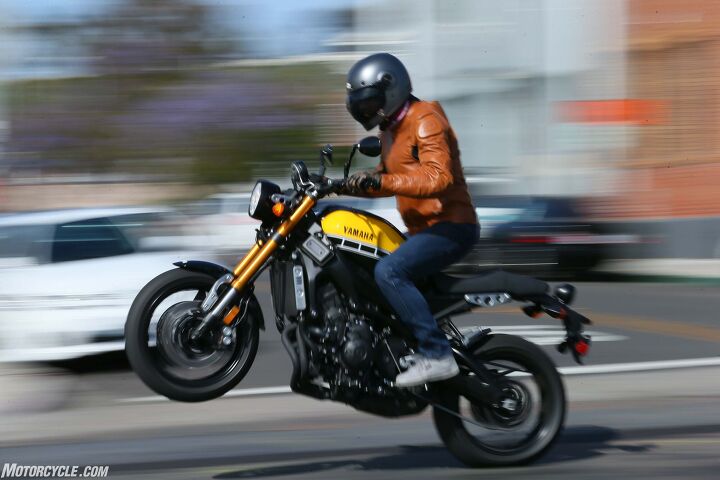 Wheelieing away from red lights is standard practice on the XSR – and this from a guy who’s not exactly the world’s best wheelier. The above photo was taken with the XSR’s traction control set to #1, the least intrusive of the 1, 2, Off settings available. This means you can leave TC on and reap its safety benefits while not interfering much with your hooliganistic tendencies. Wheelieing away from red lights is standard practice on the XSR – and this from a guy who’s not exactly the world’s best wheelier. The above photo was taken with the XSR’s traction control set to #1, the least intrusive of the 1, 2, Off settings available. This means you can leave TC on and reap its safety benefits while not interfering much with your hooliganistic tendencies.Improving the XSR’s handling are revised damping settings for the fork and shock, a longer shock spring, and the addition of longer, dual-rate fork springs. A much stiffer all-around motorcycle compared to the FZ’s sponge-cake settings, the XSR is better equipped for touching down all the wheelies you’ll be riding, as well as retaining better composure under hard braking and other aggressive riding maneuvers. Revised damping settings in the shock complement the XSR’s front end, making the XSR a sportier bike than its sportier-looking FZ counterpart. According to Yamaha, “new ECU settings match the character of the bike.” Exactly what this means is a little vague, as no definitive explanation was given. What we can confirm is, like the FZ-09, the XSR offers three Ride Modes: A, Standard, and B, with very similar settings between the two platform mates, as in A being abrupt, Standard seemingly the best choice for pretty much all riding circumstances, and B just a letter in lieu for a Rain mode. Riding modes are chosen via a right-handlebar-mounted button, and can be switched while in motion. 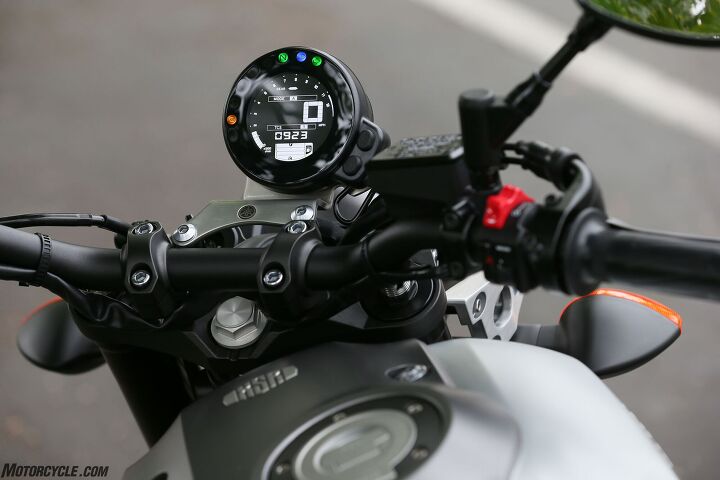 The digital instrument cluster’s blocky, Atari Tetris look is actually very legible. The single gauge makes good use of a small space by providing tach and speed info as well as riding mode, TC setting, GPI, fuel gauge, clock, and idiot lights. Toggling through odometer, trip meter, and other information is also available. Note the right-of-center location of the fuel cap. The digital instrument cluster’s blocky, Atari Tetris look is actually very legible. The single gauge makes good use of a small space by providing tach and speed info as well as riding mode, TC setting, GPI, fuel gauge, clock, and idiot lights. Toggling through odometer, trip meter, and other information is also available. Note the right-of-center location of the fuel cap.Like the FJ-09 –*the sport-touring edition of the FZ-09 –*the XSR comes equipped with ABS and traction control. And, like the FJ, ABS is non-switchable while TC can be adjusted between 1, 2, and Off when the bike is not in motion. Unlike both the FZ or FJ, the XSR comes equipped with the latest trend in clutch technology, an assist-and-slipper clutch. Besides reduced clutch pull, the technology provides smoother downshifts while reducing the effects of reverse-engine torque through the drivetrain (see Yamaha explanation video here). The interesting thing is, Yamaha chose the Sport Heritage version of the three (FZ, FJ, XSR) as the model to carry all these modern rider aids. Whether these modern accouterments will be attractive to the millennial biker tired of riding a cafe-customized XS750 remains to be seen, but XSR should at least be able to pull some millennials into dealerships with its industrial, bare-bones styling. 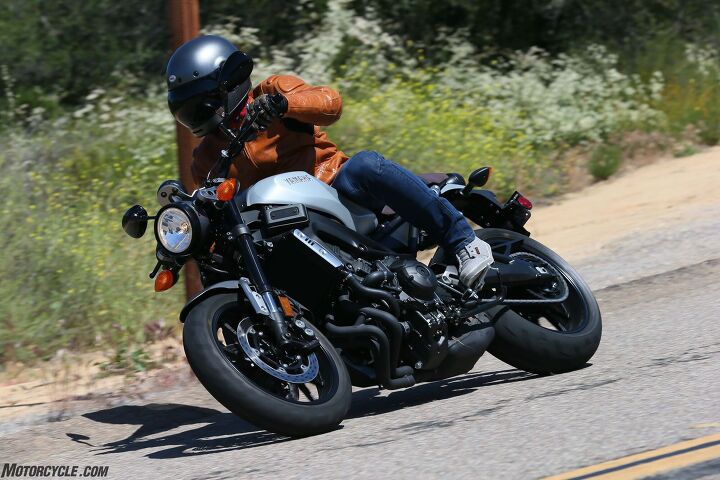 Many, including me, will prefer the subdued looks of the Matte Gray/Aluminum paint scheme of the base model XSR. Riding Gear: RSD Zuma jacket, Bell Bullitt helmet, Speed & Strength Rust & Redemption gloves, Speed & Strength Black Nine shoes. Many, including me, will prefer the subdued looks of the Matte Gray/Aluminum paint scheme of the base model XSR. Riding Gear: RSD Zuma jacket, Bell Bullitt helmet, Speed & Strength Rust & Redemption gloves, Speed & Strength Black Nine shoes.If Yamaha says the riding position is slightly more forward than the FZ-09, it can’t be by much and certainly not worth complaining about. The only problem I had with comfort is a seat that doesn’t provide much fore and aft movement, but worse are the tank cutouts that the inside of my knees were constantly resting against (I had the same problem with the tank cutouts on the Thruxton R). The adjustable front brake lever is a nice touch. 2016 Yamaha XSR900+ Highs</p>
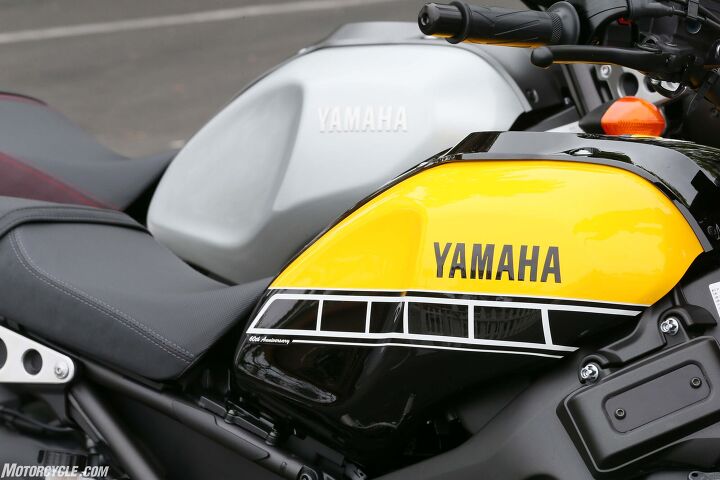 The frame-mounted box holds various electronic devices, the matching one on the left side holds only an air intake temperature sensor. It is assumed these exist in the same place on the FZ-09 but are hidden by that model’s faux air scoops. The decision to forego relocating these eyesores on the XSR was, most likely, an economical one. The frame-mounted box holds various electronic devices, the matching one on the left side holds only an air intake temperature sensor. It is assumed these exist in the same place on the FZ-09 but are hidden by that model’s faux air scoops. The decision to forego relocating these eyesores on the XSR was, most likely, an economical one.The XSR900 is the newest member of Yamaha’s expanding Sport Heritage segment of motorcycles that includes the Bolt C-Spec, SR400, and VMAX (that’s quite a disparity of performance!). Of the four, the XSR represents the most versatile among them, and the best bang-for-your-buck motorcycle outside Yamaha’s own FZ-09 or FZ-07. One thing that’s for certain, the growing range of models developed around the wonderful 847cc Triple powering the FZ, FJ, and XSR is a welcome expansion, serving the performance and styling needs of a growing variety of riders. The 2016 XSR900 is a part of Yamaha’s corporate demo fleet. If your local dealer doesn’t have an XSR demo model, check out Yamaha’s Events website for a chance to take one for a spin. And just try to keep the front wheel down –*we challenge you! </p> 2016 Yamaha XSR9002016 Yamaha*FZ-09MSRP$9,490 – Matte Gray/Aluminum $9,990 – 60th Anniversary Yellow$8,190 (all colors)Engine Capacity847cc847ccEngine TypeLiquid-cooled DOHC inline 3-cylinder 4- stroke; 12 valvesLiquid-cooled DOHC inline 3-cylinder 4- stroke; 12 valvesBore x Stroke78.0mm x 59.1mm78.0mm x 59.1mmCompression11.5:111.5:1Fuel SystemYamaha Fuel Injection with YCC-TYamaha Fuel Injection with YCC-TTransmission6-speed6-speedClutchMultiplate assist-and-slipper wet clutchMultiplate assist-and-slipper wet clutchFinal DriveChainChainFront Suspension41mm inverted fork, adjustable preload and rebound damping; 5.4-in travel41mm inverted fork, adjustable preload and rebound damping; 5.4-in travelRear SuspensionSingle shock, adjustable preload and rebound damping; 5.1-in travelSingle shock, adjustable preload and rebound damping; 5.1-in travelFront BrakesDual 298mm discsDual 298mm discsRear Brakes245mm disc245mm discABSDual electronic control ABS (front and rear controlled separately)N/AFront Tire120/70-17 Bridgestone Battlax S20R120/70-17 Bridgestone/DunlopRear Tire180/55-17 Bridgestone Battlax S20R180/55-17 Bridgestone/DunlopSeat Height32.7 in32.1 inWheelbase56.7 in56.7 inRake/Trail25.0°/4.1 in25.0°/4.1 inOverall Length81.7 in81.7 inOverall Width32.1 in32.1 inOverall Height44.9 in44.7 inCurb Weight (Claimed)430 lbs414 lbsFuel Capacity3.7 gal3.7 galColorsMatte Gray/Aluminum, 60th Anniversary YellowArmor Gray, Raven, Impact BlueWarrantyOne yearOne year 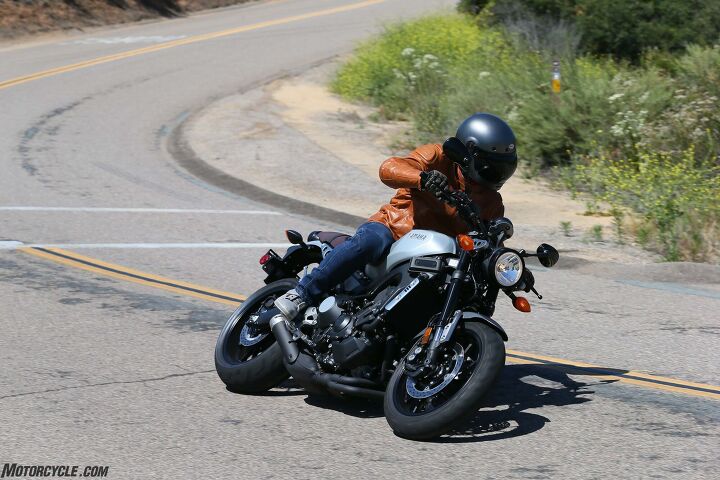 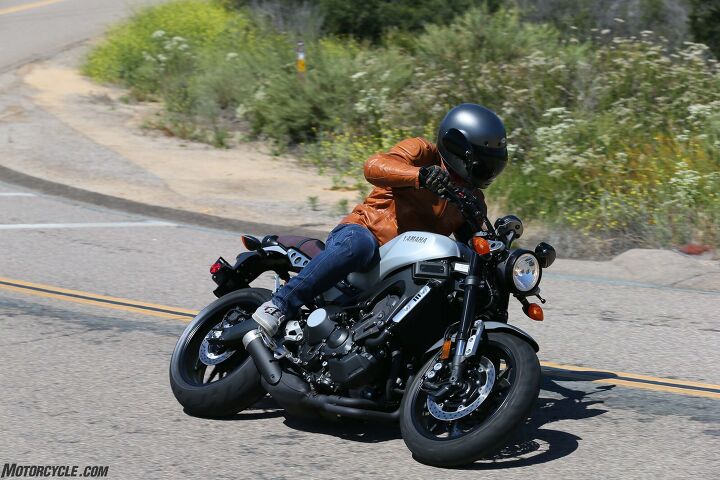  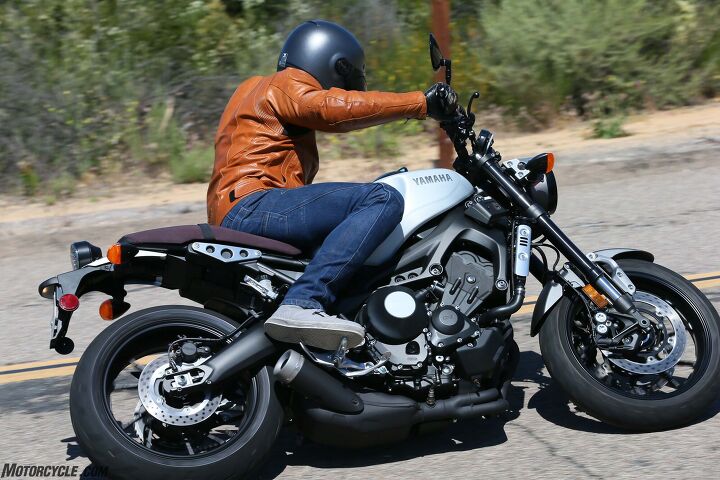 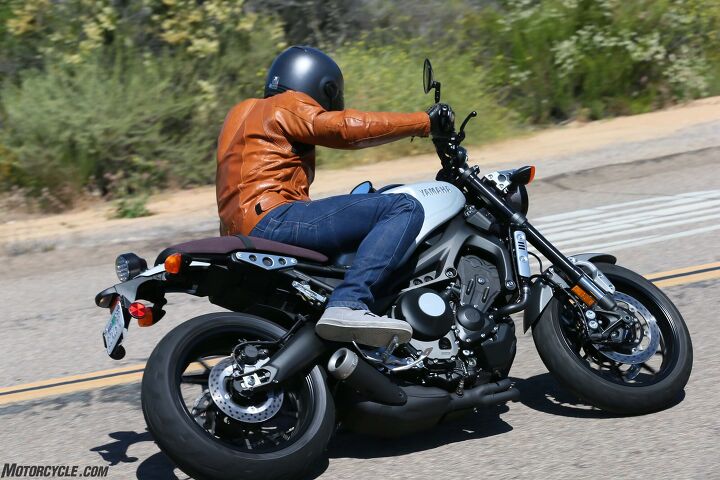 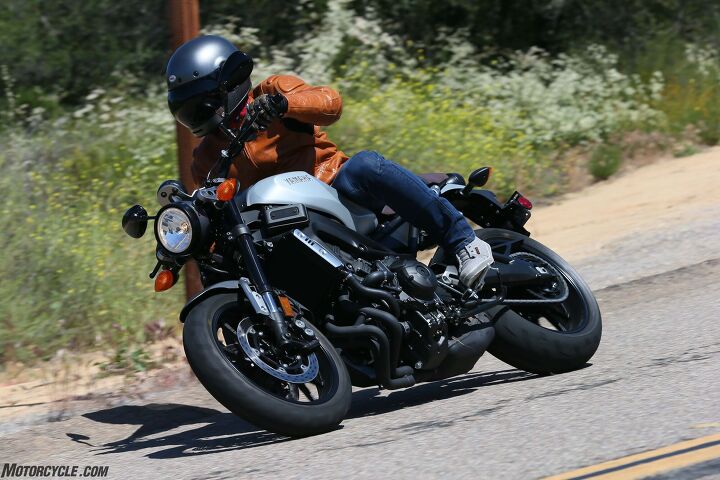 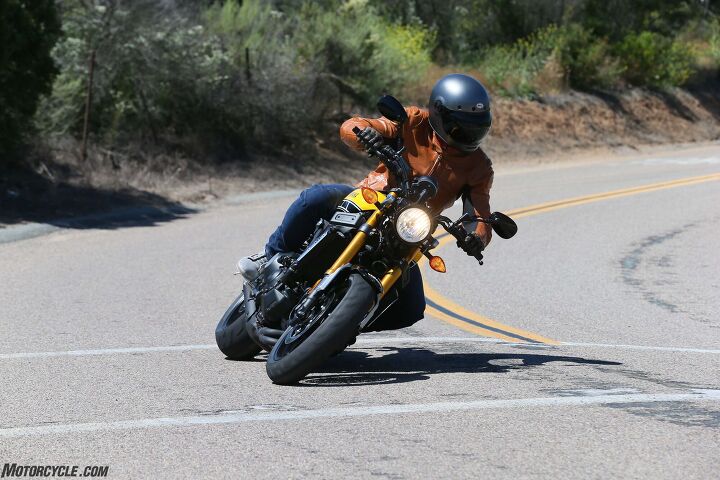 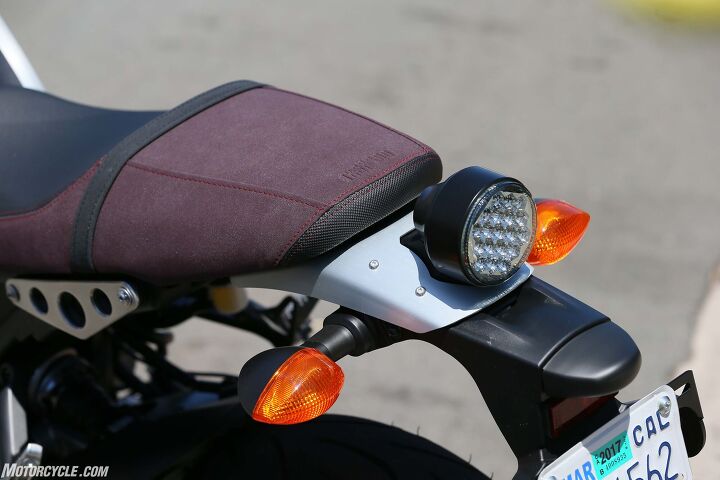 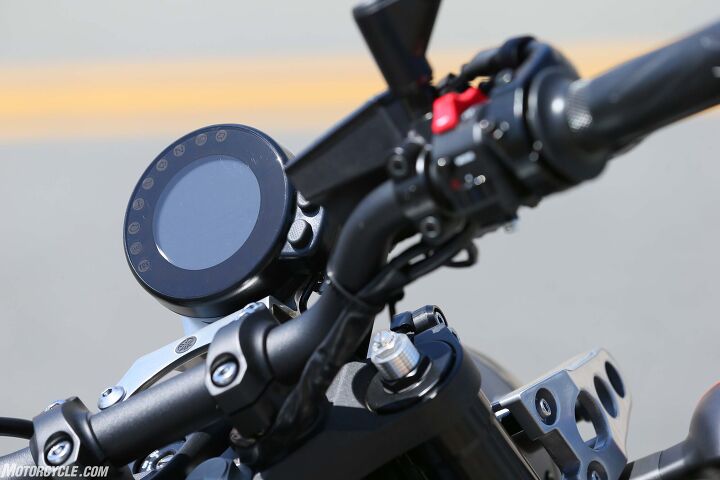 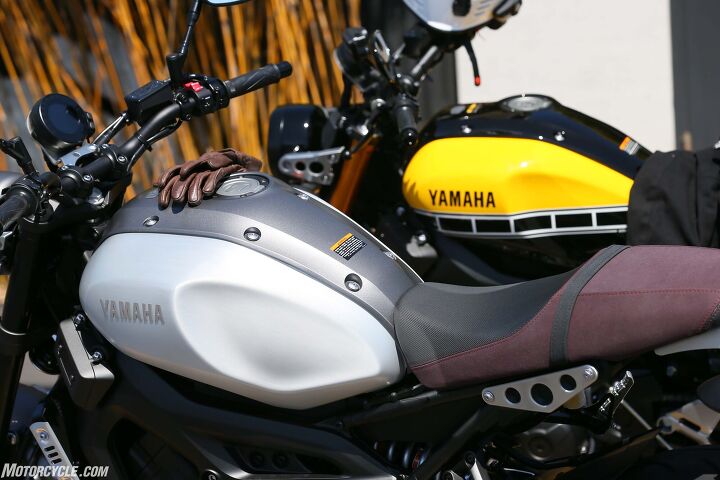 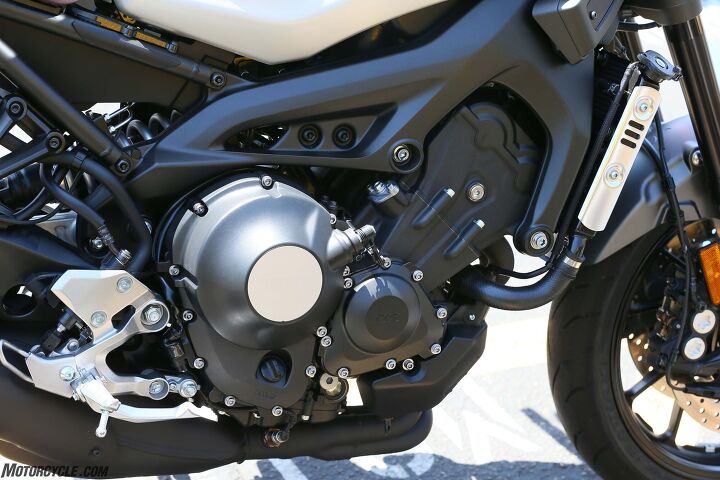 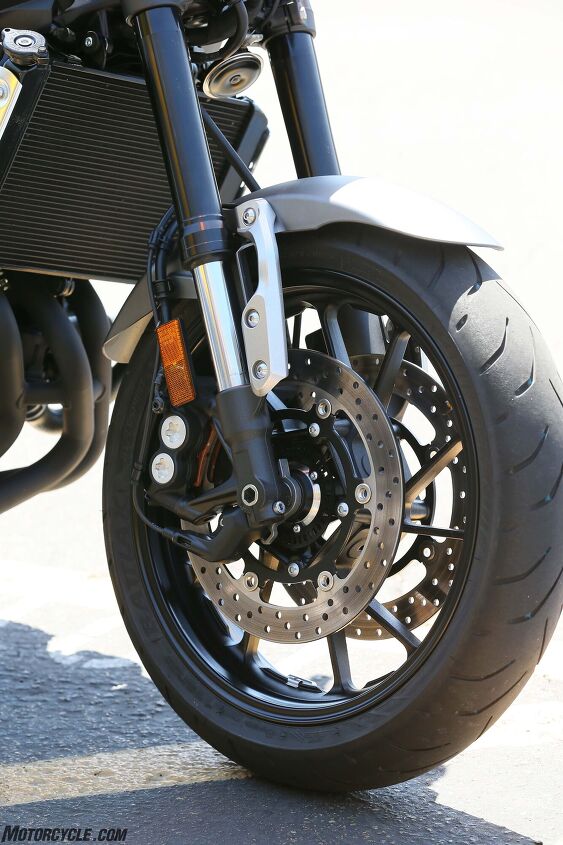 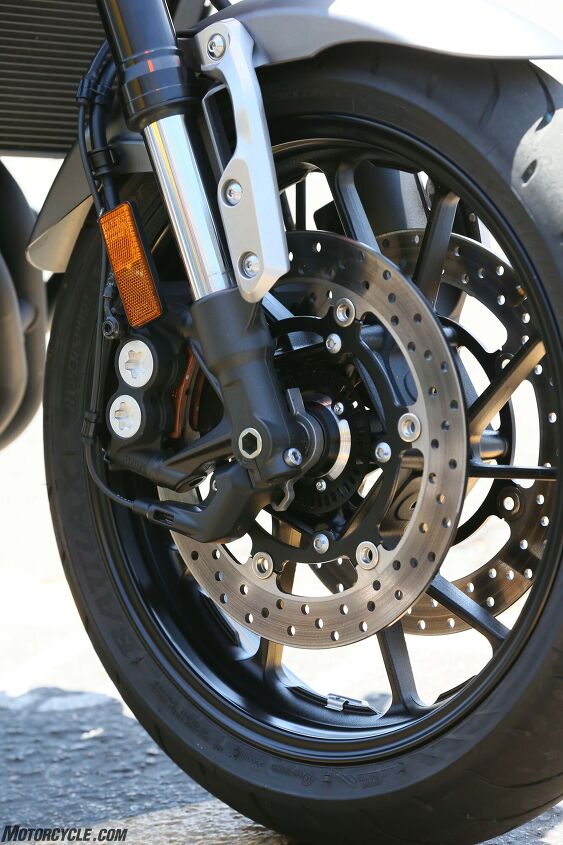 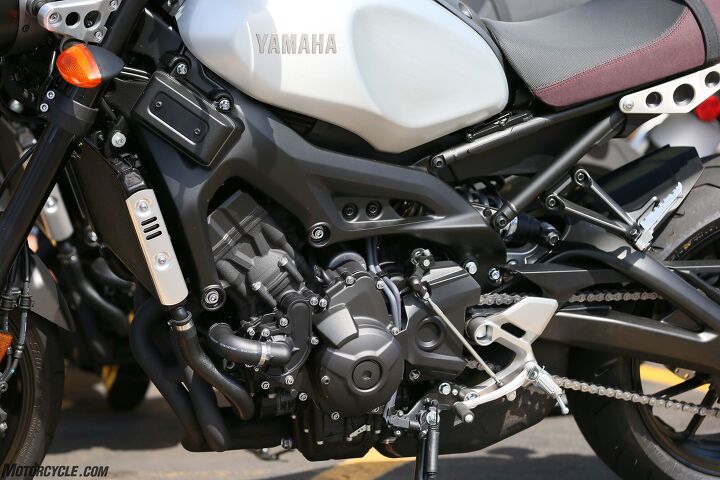 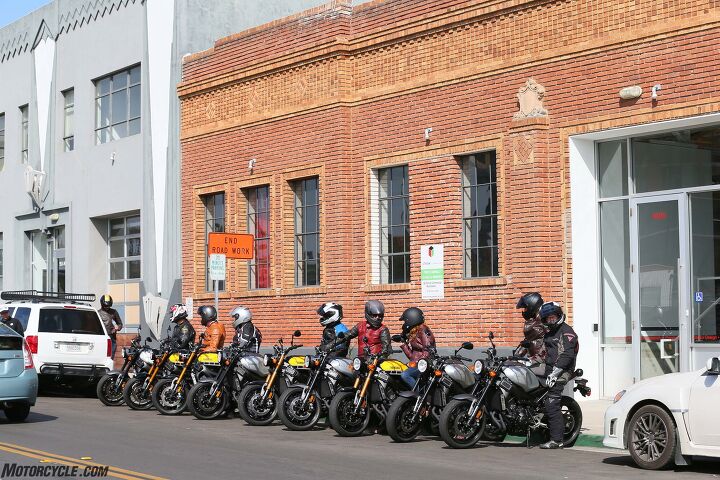 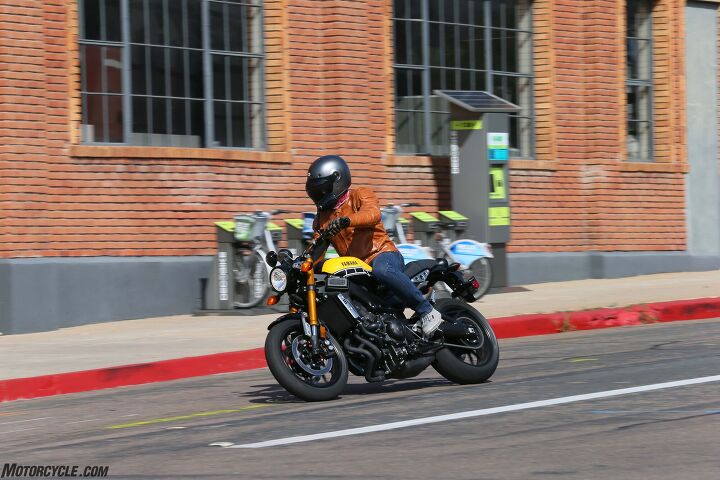 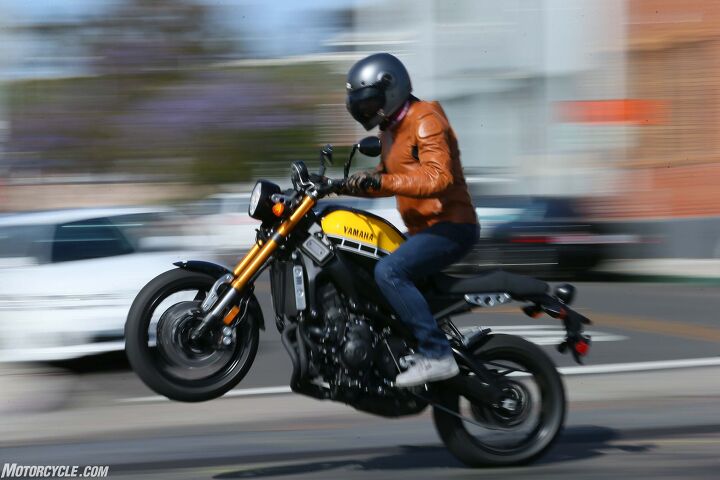 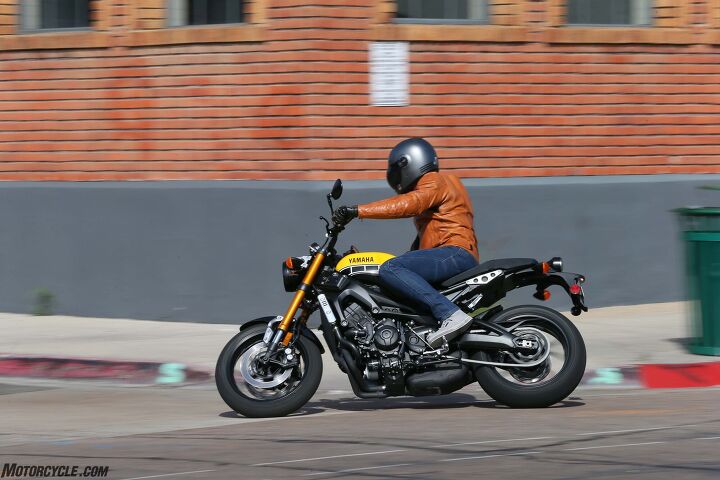 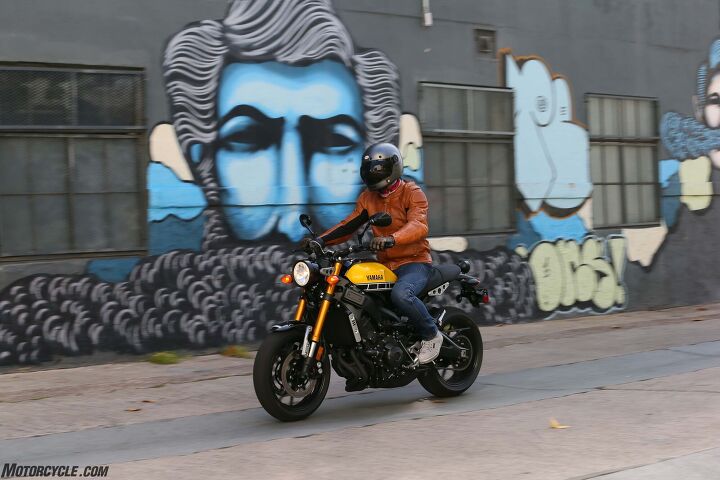 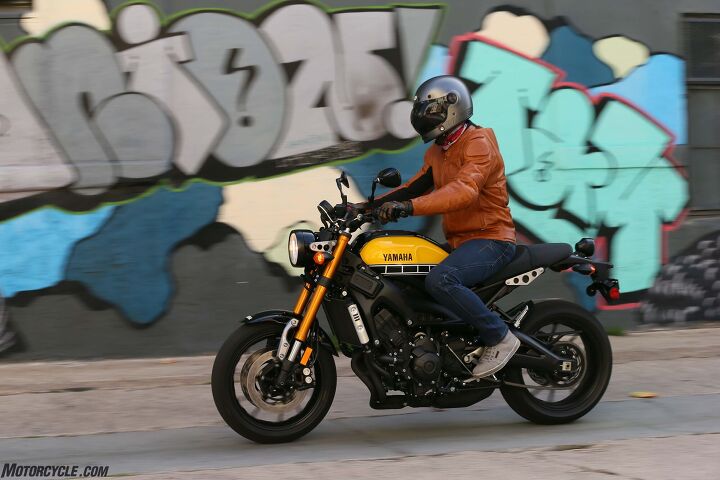 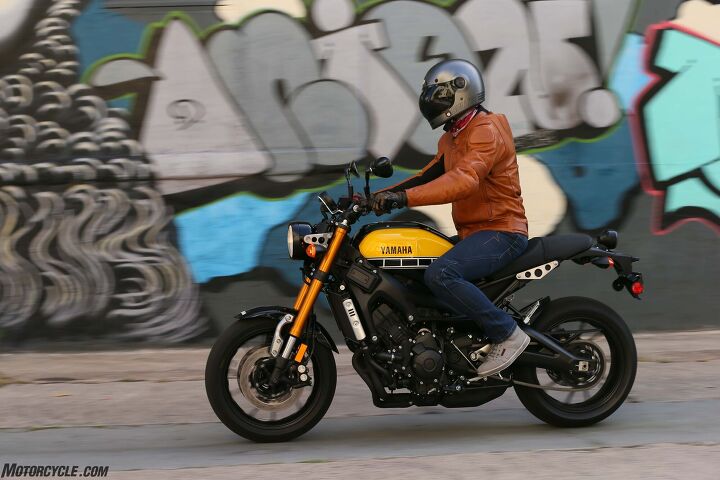 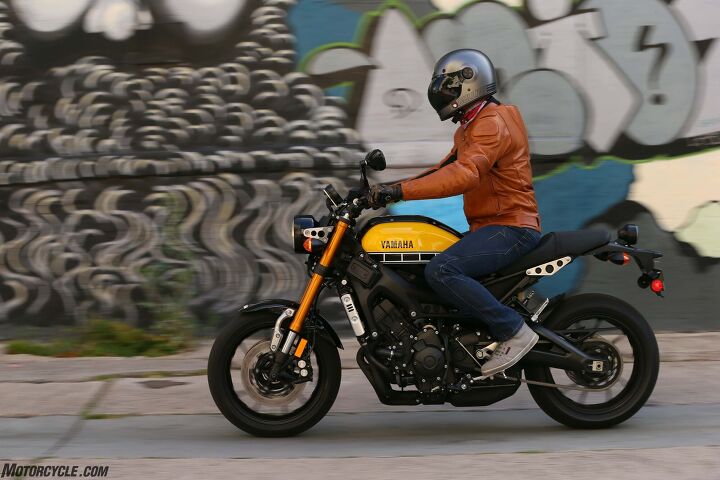 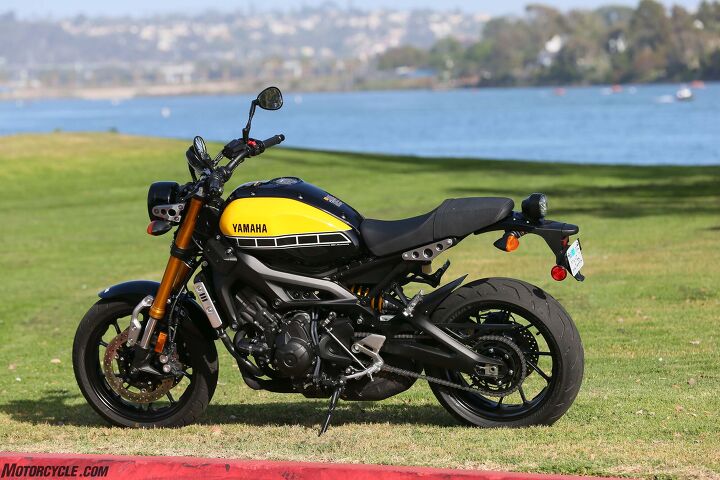 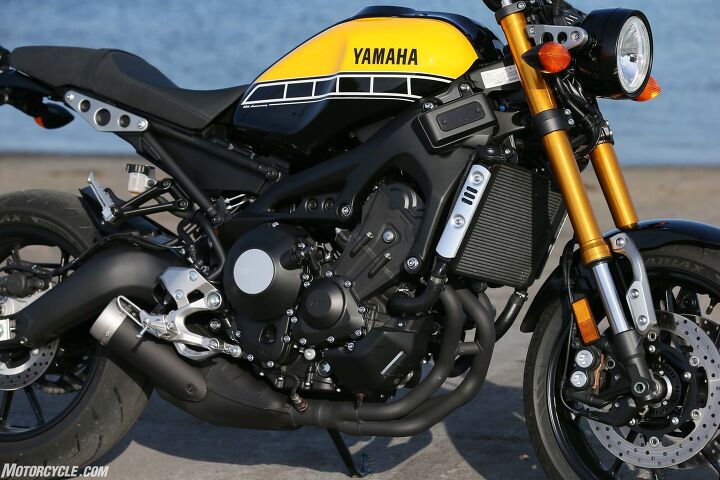 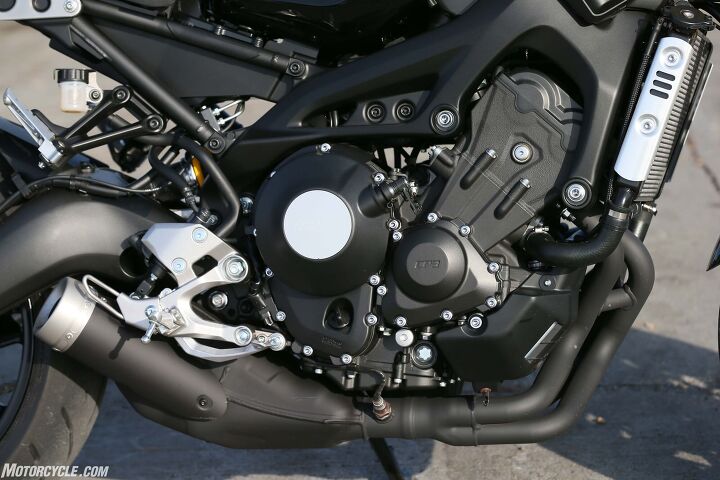 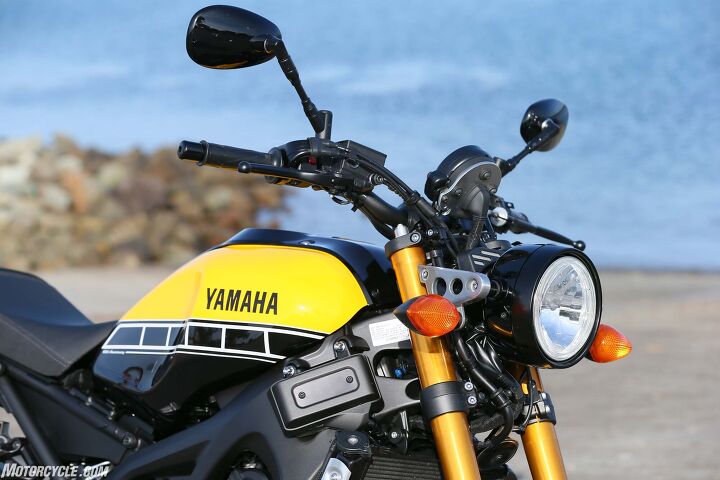 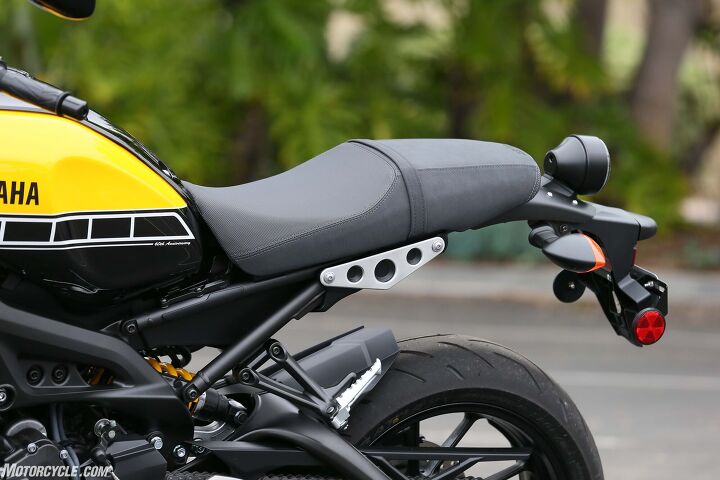 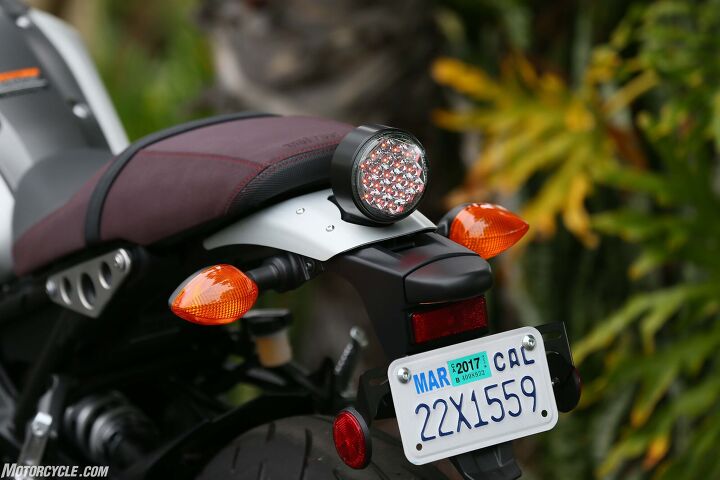 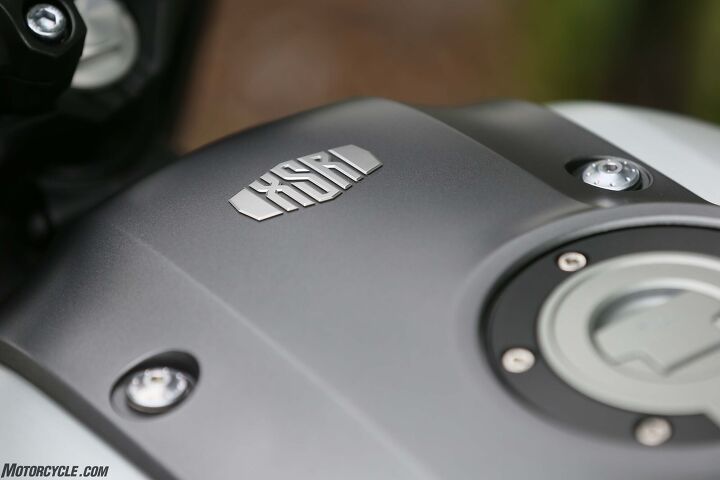 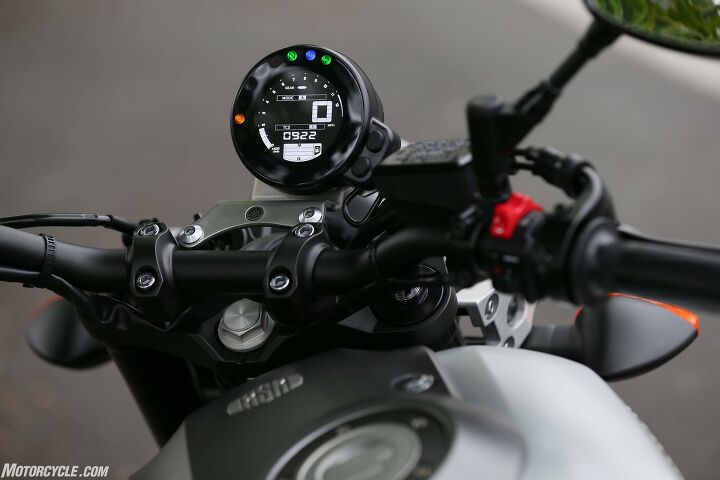 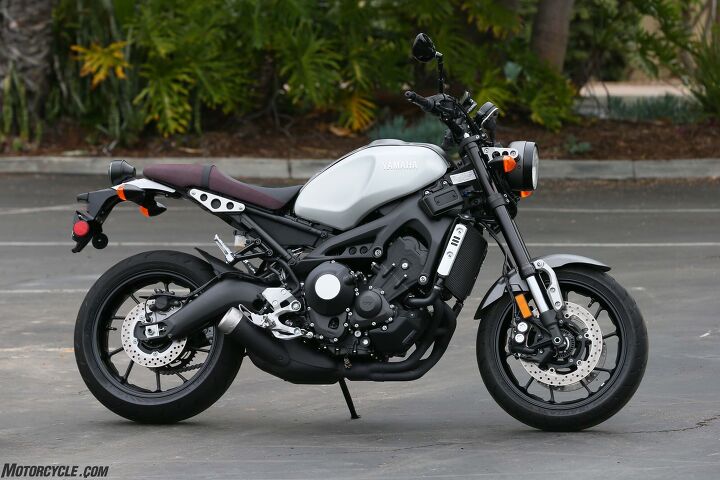 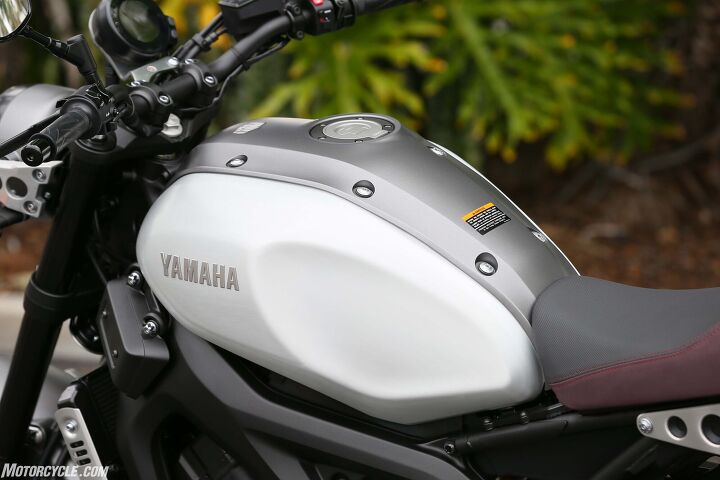 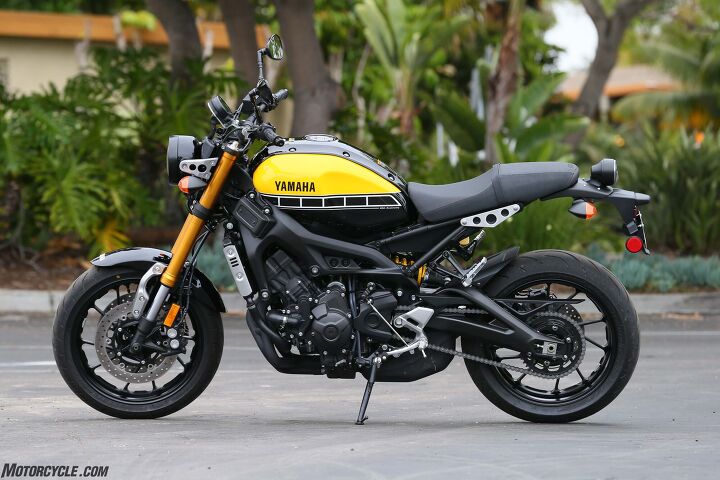 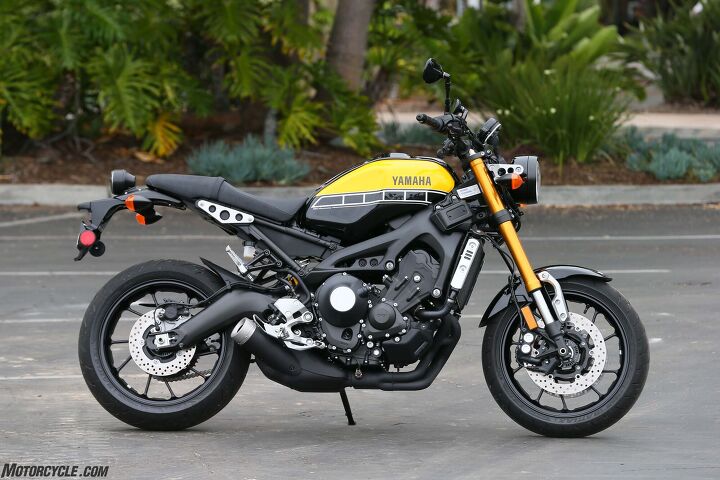 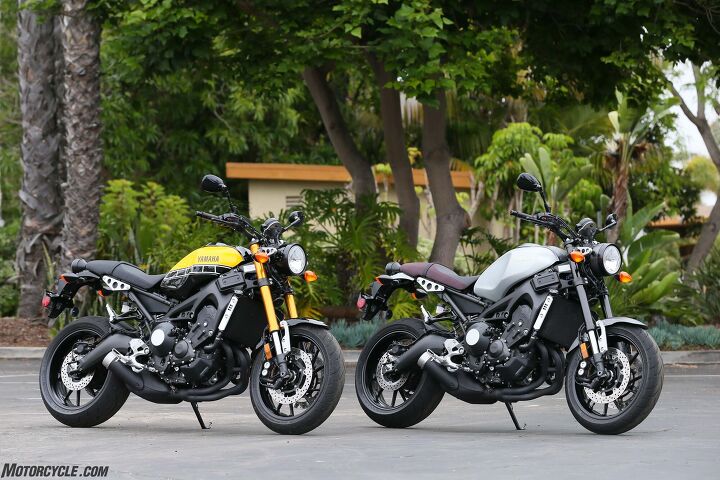 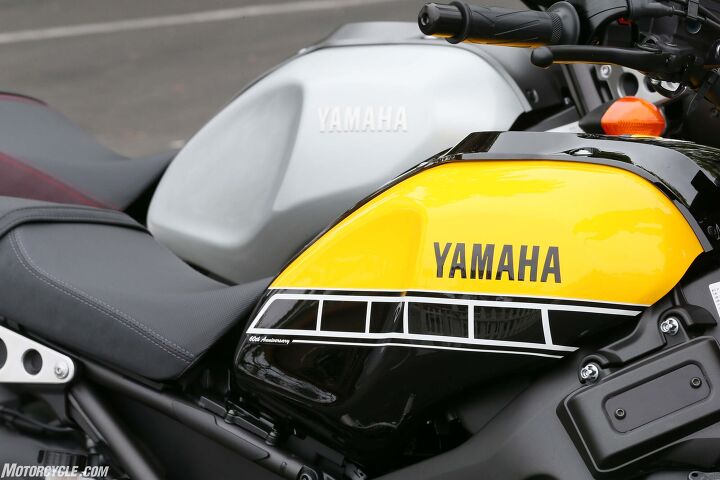 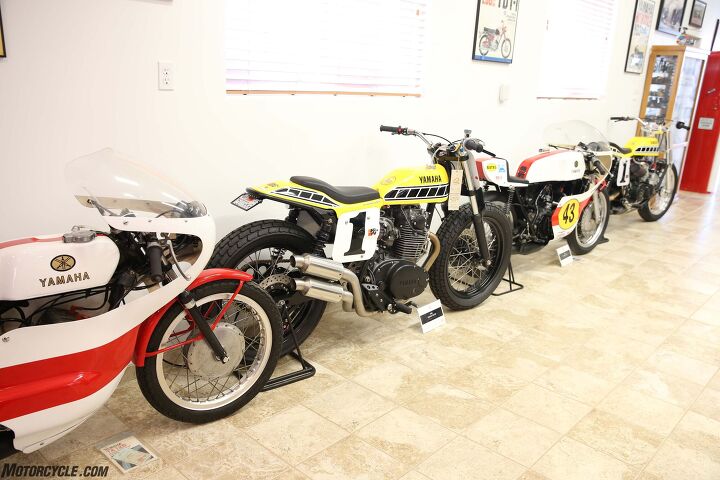 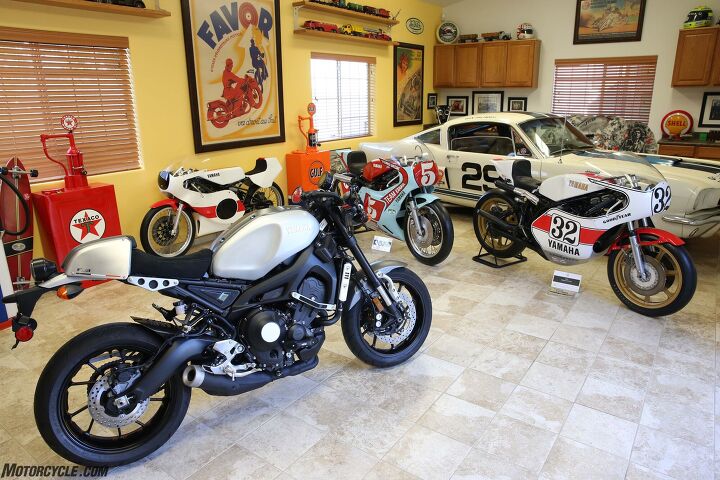 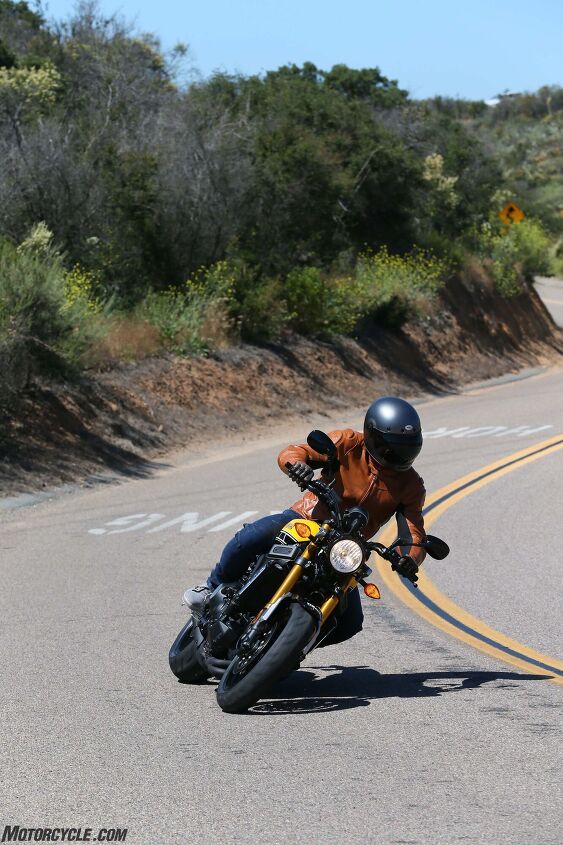 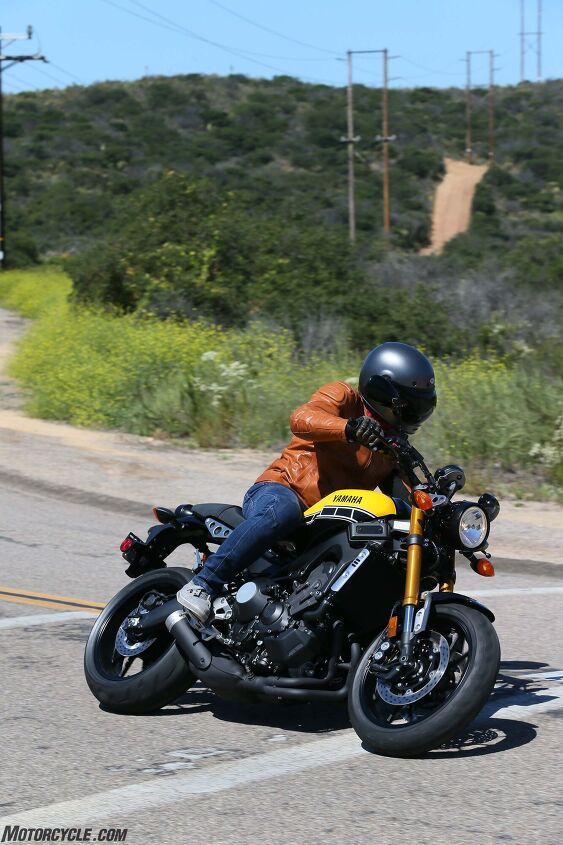 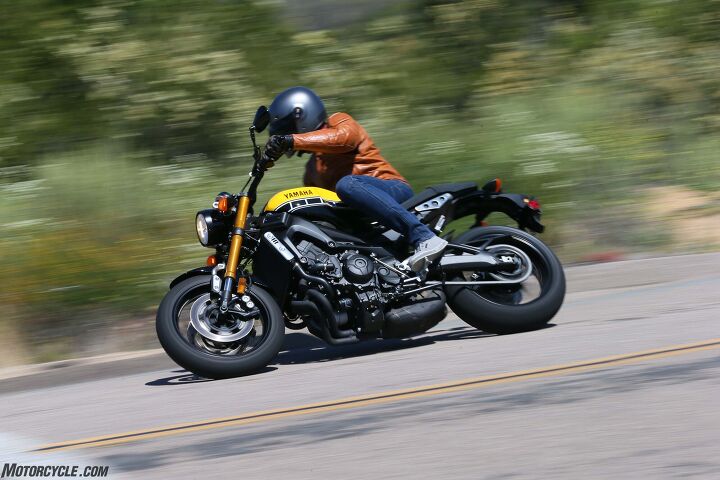 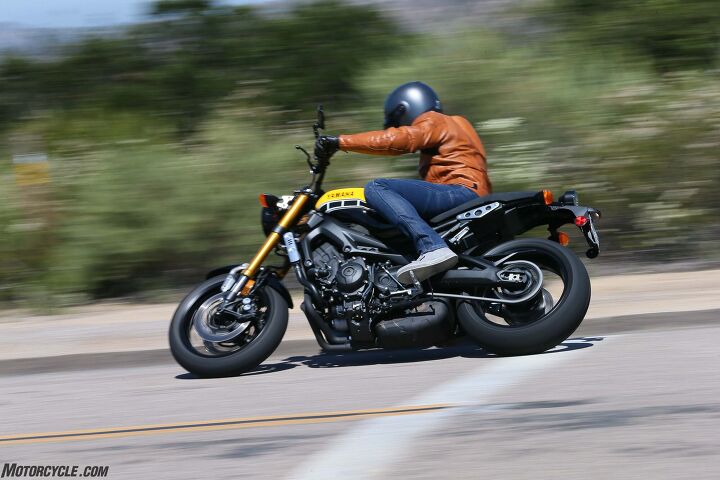 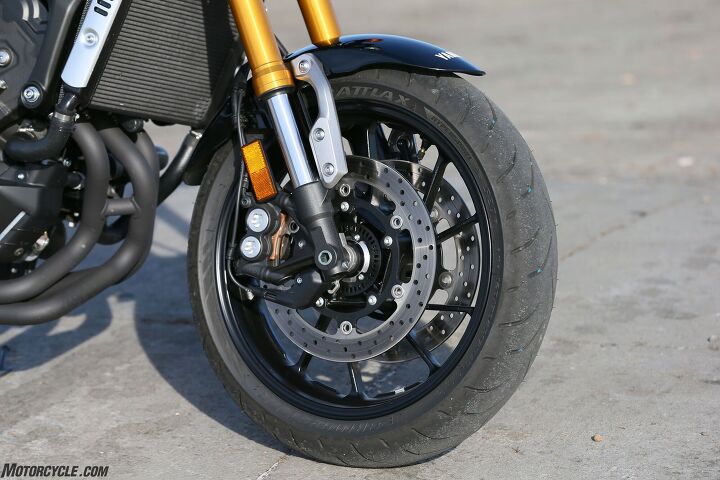 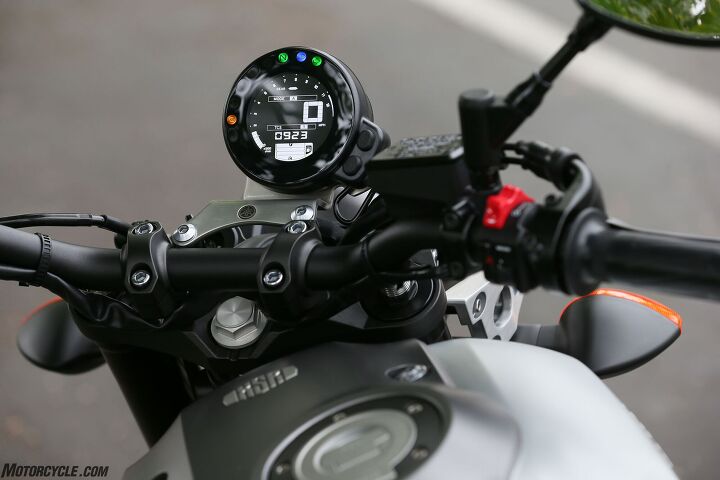 2016 Yamaha XSR900 First Ride Review appeared first on Motorcycle.com. Click here for full story...
__________________________________________________
I'm a bot. I don't need no stinkin' signature... |
|
|

|
 |
 Similar Threads
Similar Threads
|
||||
| Thread | Thread Starter | Forum | Replies | Last Post |
| [visordown.com] - First ride Yamaha XSR900 review | Ninjette Newsbot | Motorcycling News | 0 | February 2nd, 2016 12:41 PM |
| [sportrider - features] - More Photos of the 2016 Yamaha XSR900 | Ninjette Newsbot | Motorcycling News | 0 | January 5th, 2016 07:00 PM |
| [motorcycle.com] - 2016 Yamaha YZ450FX Ride Review | Ninjette Newsbot | Motorcycling News | 0 | December 14th, 2015 03:30 PM |
| [sportrider - features] - 2016 Yamaha XSR900 First Look | Ninjette Newsbot | Motorcycling News | 0 | November 17th, 2015 06:00 PM |
| [motorcycle.com] - 2015 EICMA: 2016 Yamaha XSR900 | Ninjette Newsbot | Motorcycling News | 0 | November 16th, 2015 02:50 PM |
|
|